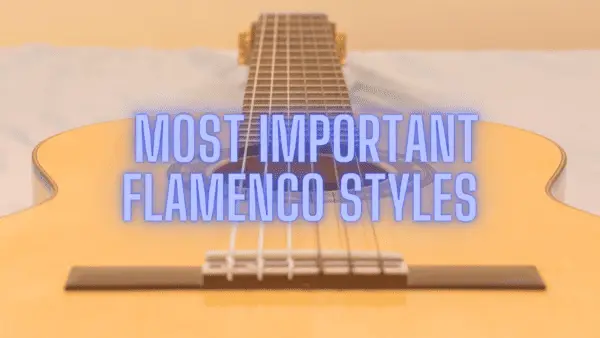
Best courses for learning how to play the flamenco guitar
Do you want to learn to play flamenco guitar? We are going to show you the best courses to learn how to play. Let’s take a look.

Guitar music has evolved over centuries and across cultures, resulting in a wide range of styles and techniques. Two popular guitar styles are classical and flamenco, each with its unique characteristics and playing techniques. In this article, we’ll explore the differences between classical and flamenco guitars.
Classical guitars typically have a larger body than flamenco guitars, with a wider and flatter fingerboard. Classical guitars are often made of high-quality wood, such as rosewood or ebony, and feature a soundboard made of spruce or cedar. Classical guitars have a thicker top and back than flamenco guitars, which gives them a fuller and more resonant sound.
Flamenco guitars, on the other hand, have a thinner top and back than classical guitars, resulting in a brighter and more percussive sound. They are typically made of cypress wood and feature a slightly curved fingerboard, which makes it easier to play the rasgueado and golpe techniques that are common in flamenco music.
Classical guitar playing emphasizes fingerpicking and arpeggio techniques, where each note is plucked individually with the fingers. The thumb is usually used for the bass strings, while the other fingers are used for the treble strings. Classical guitar players also use techniques such as vibrato, slides, and hammer-ons to create a rich and expressive sound.
Flamenco guitar playing, on the other hand, emphasizes percussive and rhythmic techniques. Flamenco guitarists use techniques such as rasgueado (rapid strumming with the fingers), golpe (tapping the guitar body), and picado (rapid picking with the fingers) to create a rhythmic and energetic sound. Flamenco guitarists also use techniques such as arpeggio and tremolo to create a more melodic sound.
Classical guitar music encompasses a wide range of styles, from Renaissance and Baroque music to contemporary and avant-garde compositions. The repertoire includes pieces written by famous composers such as Bach, Giuliani, and Villa-Lobos, as well as arrangements of popular songs and traditional music from around the world.
Flamenco guitar music is closely associated with flamenco dance and includes a range of styles such as bulerías, soleá, and fandangos. Flamenco guitarists often accompany flamenco dancers and singers, and the repertoire includes both traditional and modern flamenco music.
In conclusion, classical and flamenco guitars have distinct differences in construction, playing technique, and repertoire. While classical guitar playing emphasizes fingerpicking and a melodic sound, flamenco guitar playing emphasizes percussive and rhythmic techniques to create an energetic and expressive sound. Both styles have their unique charm and beauty and offer guitar players a diverse range of musical opportunities.
CEO de la empresa

Do you want to learn to play flamenco guitar? We are going to show you the best courses to learn how to play. Let’s take a look.

Which are the most important flamenco styles?

What are the differences between a flamenco guitar and a classical guitar? Let’s have a look

Flamenco guitar is known for its unique sound and distinctive style, which has captivated audiences for centuries. If you’re looking to invest in a flamenco guitar, it’s important to choose one that is of high quality and has the right sound and feel. In this article, we’ll take a look at 10 of the best flamenco guitars in the world, from classic to modern designs, to help you make an informed decision.